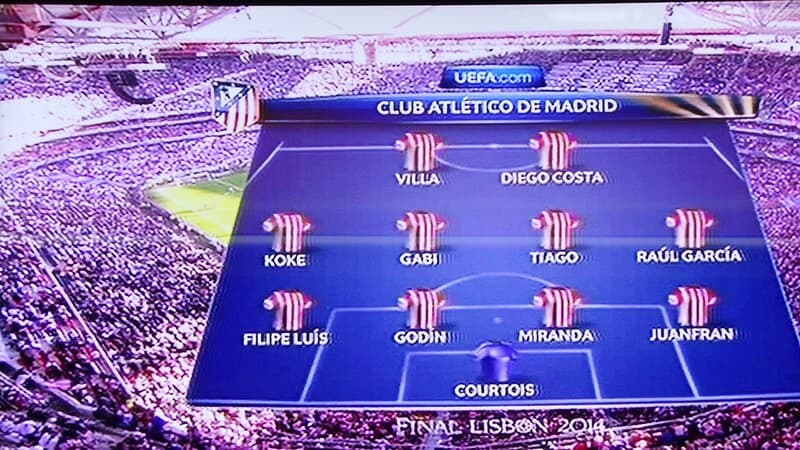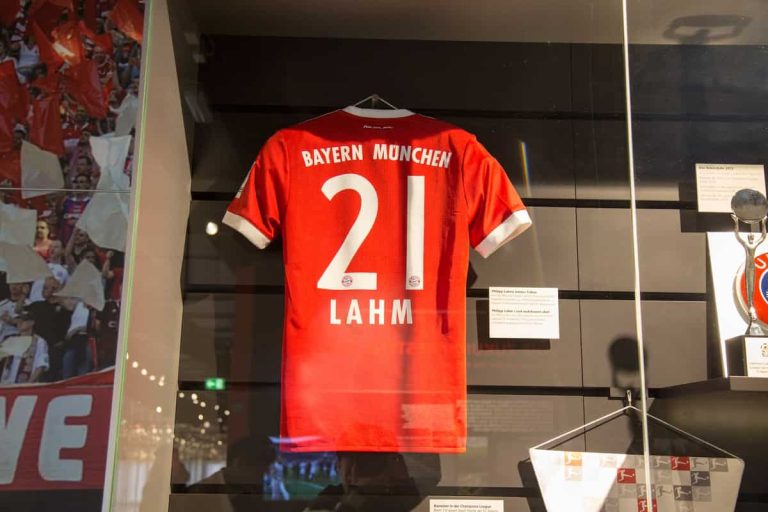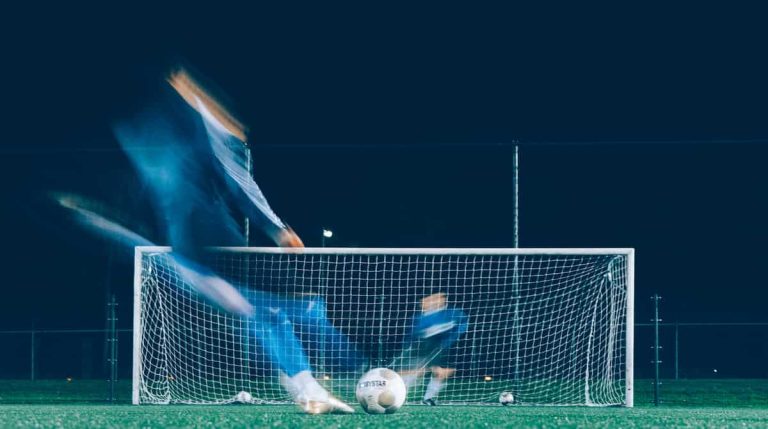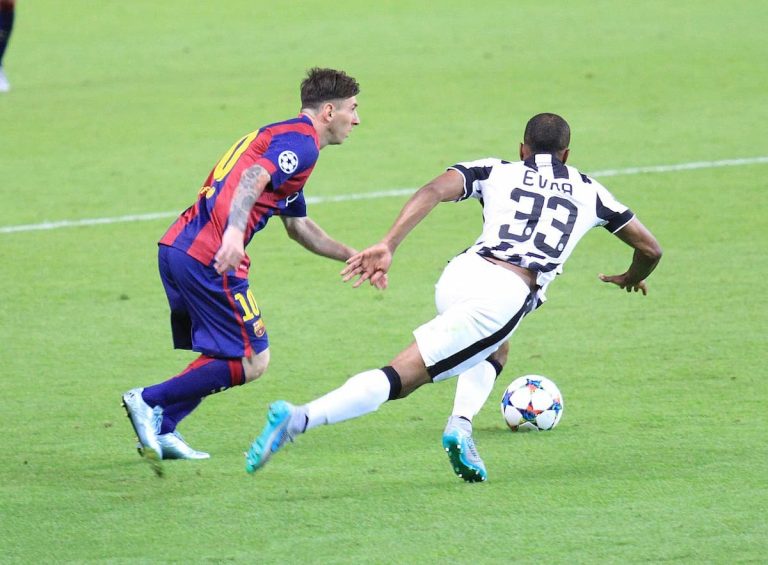How Do Football Loans Work?

Photo Credit – El Coleccionista de Instantes Fotografía & Video (no changes made) under Creative Commons Attribution-ShareAlike 2.0 Generic
You may have heard the term ‘loan’ commonly used in the sport of football, but how exactly do football loans work? There are a number of reasons why football clubs use the loan system, as it can be beneficial for the club and the players themselves.
If you’re wanting to learn more about football loans, what they are, how they work, the different types of football loans available and more, this article is for you.
Table of Contents
What Are Football Loans?
A football loan is when a player temporarily plays for another club which isn’t the club they’re contracted to. There are two main types of football loan available – domestic and international, and these can vary in length but are typically 1 year long.
How Do Football Loans Work?
Football loans involve discussions between three key parties: the player, the parent club, and the loan club. The parent club owns the player’s contract, so they’ll need to make a loan agreement with the loan club for the player to move there on a temporary basis.
If the player is happy to move to the loan club and the parent club has agreed a loan period with the loan club, they’ll then start to discuss payment, recall and option-to-buy clauses. Payment terms can vary across different loans, with some loan clubs paying 100% of the player’s wages and others paying much less. Sometimes loan fees are involved too, so a loan club will have to pay a set fee on top of a proportion of the player’s wages to agree the transfer.
If a recall clause is agreed during loan negotiations, the parent club will have the right to recall their player at any time during the loan period.
Why Do Clubs Use Football Loans?
Advantages of Loans for Clubs
Parent clubs will make the most of football loans because their players will gain valuable experience and playing time, which in turn will improve their skills on the pitch. A good loan spell can really increase the value of a player this way, so financially there is a huge incentive for football clubs to use the loan system wisely.
Clubs will also use the loan system to free up space in their squad, which is really helpful for teams with numerous players on their books. In contrast, loan clubs will use the market when they are struggling with injuries and suspensions. It becomes a handy way to fill in the gaps of a squad in a cost-effective and low-risk way.
Advantages of Loans for Players
The main advantage of a loan move for a footballer is the opportunity to play more games. Playing matches is the main way footballers improve, and it might require a player moving out on loan in order to gain this experience.
They’ll learn how another club operates, which could potentially be in a different country and league, which will widen their knowledge. They’ll also experience another coach, possibly someone who is a tactical football manager, and they might learn how to play in different formations too.
Footballers will also enjoy meeting and communicating with new teammates and experiencing a new location. For the most part, a loan move can be an all encompassing experience that will improve a footballer’s mentality, technical ability and motivation to succeed in the game.
How Loans Can Help Clubs With Limited Budgets
How do loans work in football if a club has a limited budget? Well, loans can be a great way for clubs with limited budgets to sign players. They’ll have the opportunity to sign players at a reduced cost, especially if they’re able to only pay a small portion of their wages. This is much more cost-efficient than paying a large transfer fee and 100% of a player’s wages.
Loan Agreement Terms
For a loan to be agreed between a player, parent club and loan club, several loan agreement terms need to be discussed. These include – length of loan, salary arrangements, insurance and injury clauses and playing time requirements.
Length of Loan
The first thing to be discussed in a loan agreement is the length of the loan. Typically, a loan will last 1 full season, however there have been instances when players have been loaned out for 6 months, 1 month and as long as two years.
If a player moves on loan for one year, it’s common for the same arrangement to happen the following season. An example of this is goalkeeper Thibaut Courtois, who was loaned to play in La Liga with Atlético Madrid for three consecutive seasons from Chelsea.
Salary Arrangements
How do football loans work in terms of salary arrangements? Once the length of a loan has been agreed, salary arrangements need to take place. These arrangements vary on a case-by-case basis, however there are some good rules of thumb:
- If a youth player is being sent out on loan to gain first team experience, the chances are that they’ll be on low wages, so the parent club will pay their salary. The player will likely join a team in a lower league, who have less financial resources, too. The parent club should get a lot out of sending the player on loan, so they’ll be more than happy to pay their salary.
- If a player is being sent out on loan who is on a high salary, it’s common for their salary to be split between both the parent and loan club. These percentage splits can vary per deal, with some being 50/50, while others being 80/20, it all depends on what’s agreed between the two clubs.
- If a loan club is willing to pay 100% of the loan player’s wages, it’s a clear indicator that they really want to sign the player. Parent clubs will like these types of arrangements as it will free up resources on their wage bill.
Insurance and Injury Clauses
During loan agreements, clubs have to agree on insurance and injury clauses for loan players too. For example, if a player experiences a serious injury while out on loan, they’ll want an injury clause in place so that they can receive financial compensation. This sum will take into account the duration of time that the player is out for, based on different scenarios and injuries.
Playing Time Requirements
In some loan agreements, playing time requirements are discussed. It can be a waste of everybody’s time and effort if a loan player plays 0 minutes during their loan spell, so some clubs and players will insist on agreeing a number of games that the player will play.
This will vary across different loan deals too, as it’s a negotiation to make sure the parent club, the loan club and the player are all happy. For example, it might be agreed that a loan player will make 5 starts and 10 appearances in total during their loan spell.
Types of Football Loans
There are three main types of football loans – domestic loans, international loans and emergency loans.
Domestic Loans
Domestic loans are when a player temporarily plays for a team in the same country as their parent club. They are sometimes referred to as ‘temporary transfers’.
There are rules around how many domestic loans a side can have, and these vary across different leagues. For example, in the Premier League, sides are allowed to have 2 domestic loans across a season.
When a player is loaned to a team in the same league, it can be beneficial for all parties for a number of reasons. Firstly the player is getting relevant experience in a league they want to be playing in, the parent club knows the player will be getting useful playing time and the loan club will be optimistic that the player will be able to settle in quickly.
International Loans
International loans are when a player temporarily plays for a team in a different country as their parent club. This often happens, with players seeking new opportunities in different leagues if they aren’t regularly playing for their parent club.
In 2022, FIFA announced that they would be changing their rules around international loans. A phased-in restriction on the number of international loans in and out during each season now looks like this:
- July 2022 to 30 June 2023: maximum of 8 players
- July 2023 to 30 June 2024: maximum of 7 players
- July 2024 to 30 June 2025: maximum of 6 players
Emergency Loans
In 2016, FIFA banned emergency loans in football. Emergency loans allowed some clubs to loan players for a period of between 28 and 93 days during a closed period outside the two annual transfer windows.
Premier League clubs weren’t allowed to make emergency loan signings, as the idea was that it would be beneficial for smaller clubs with less budget and resources. Premier League clubs were able to loan their players out on emergency loans, though.
When emergency loans were banned by FIFA, smaller clubs suffered. Maybe we’ll see something similar come back into the game at a later date, but for now it’s simply domestic and international loans that are available.
Loan Players’ Role in the Club
Integration Into the Team
The first priority of a loan player will be to integrate themselves into their new team quickly. This can be difficult if they are joining midway through a season. Understanding the atmosphere around the training ground and on match day is crucial to making that settling in process comfortable.
If a player has been loaned to a side based in a different country, they might need to learn a different language. Loans across Europe are common, and Europe is a hub for a whole host of languages, so this scenario is common.
Responsibilities of Loan Players
Responsibilities of loan players will vary each time, however some are applicable to every loan that takes place.
Contributing to the Team’s Success
Every loan player is responsible for contributing to the success of their loan side. This involves the player putting in 100% effort every game, producing performances that help the team win matches.
Maintaining Fitness and Health
Footballers, whether they are on loan or not, are responsible for maintaining a good level of fitness and health. As they are professional athletes, this is a given, and they have the facilities, training sessions and resources available to easily achieve this.
Building Relationships with Teammates
Building relationships with new teammates is a fundamental responsibility of a player during a loan spell. Relationships are vitally important to the success of a football team, and a loan player is responsible for making the effort to get to know their new teammates well, so that they’re able to build great working relationships on the pitch.
Embracing Club Culture
Culture varies at each club across the world, and loan players are responsible for embracing their new club culture when they go on loan. Although it’s likely that they won’t spend a huge amount of time within this culture, it’s respectful to embrace it during the time that they are there.
This will help the loan player become more likeable in the dressing room, impressing the manager and other club officials in the process.
Representing the Club Positively off the Pitch
All footballers have a duty to behave off the pitch in their spare time. Due to the extreme amount of exposure that football players receive, they have to be careful that they aren’t caught behaving badly or doing something illegal.
Although this doesn’t always happen, and there have been countless times when footballers have been caught behaving badly, it’s really important that loan players behave during their loan spell. They should talk about their loan club positively in interviews, too.
Expectations of Loan Players
Expectations of loan players will have been discussed between the player, parent club and loan club before the move is agreed. It might be a case that a team has lost their main striker due to an injury and the loan player is expected to replace them for the remaining 6 months of the season.
In this example, the expectation of the loan player is clear, to put in performances that were expected of the injured striker.
Expectations of loan players will be determined on a case-by-case basis, often times young players move to teams in lower leagues to get some first team experience. This is a simple expectation to achieve.
What Happens at the End of a Football Loan?
At the end of a football loan, a number of things can happen. Typically, players return to their parent club, however the loan club or player might have the desire to extend the loan period or even make the move permanent.
All of this is dependent on the original loan agreement and the desires of both clubs and the player, so this is a conversation that will be had between the three parties as they approach the end of the agreed-upon loan period.
Criticisms of the Football Loan System
Criticisms of the Impact of Loans on Player Development
There are examples of both great loan moves and terrible loan moves, and it’s a risk each time. If a loan move has been well-thought-out and a player is moving to a club where there is opportunity for them to play and improve, there’s a high chance that the move will be a success.
On the other hand, if a loan move isn’t well-thought-out, and a player ends up moving to an ill-fitting side where their opportunities are scarce, the outcome probably won’t be positive. It’s common for players to move out on loan and barely play a competitive minute, which isn’t beneficial for the player or their parent club.
Concerns About the Exploitation of Loan Players
If a young player has been signed on loan, only to warm the bench for 6 months, it’s clear that they are being exploited. This can be a negative experience for a player, denting their confidence and crushing their motivation for the game.
This is where the importance of playing time requirements should be highlighted. Without these clauses, the exploitation of loan players remains a clear problem in the world of football.
Conclusion
To conclude, football loans are an important part of the professional game that allow players to gain experience and playing time, while also providing benefits for both the parent club and the loan club. It’s important that loan moves are well-thought-out and prepared properly for them to be a success for all parties.
Problems arise when loan moves are rushed over the line and the loan player’s interests aren’t protected. This can lead to potential player exploitation. We believe that with the right preparation, loan moves are vitally important for the development of young players and can provide more experienced players with fresh starts to help restart their careers.
We hope this Elastico article has provided you with a comprehensive understanding of how football loans work.
Frequently Asked Questions
Who Pays a Player on Loan?
Typically, a football player’s parent club will pay their wages while they are out on loan, however there are exceptions to this. If the player is on high wages, it’s likely that a deal will be agreed between the parent club and loan club to split their wages, e.g. each club pays 50%.
How Many Players Can a Football Club Loan Out?
In July 2022, FIFA changed the rules so that clubs can only loan out 8 players during a season. This rule doesn’t apply to players who are 21 or players that have been “club-trained” otherwise referred to as “home-grown” players.
Can a Club Recall a Loan Player?
Yes, a loan player can be recalled to their parent club during their loan spell if their contractual agreement allows them to do this. If a clause wasn’t added to their contract, then a player can’t be recalled.
How Does Football Loan Purchase Work?
Football loan purchases are often agreed in advance of the loan. A player will sign a loan with a view to a permanent transfer, this includes a clause in their contract with an agreed upon price that the club can pay to make the player’s transfer permanent at the end of the loan period.
If a player impresses their loan side, but there isn’t an option to buy included, the parent club will likely charge the other club a high fee to make the transfer permanent.






